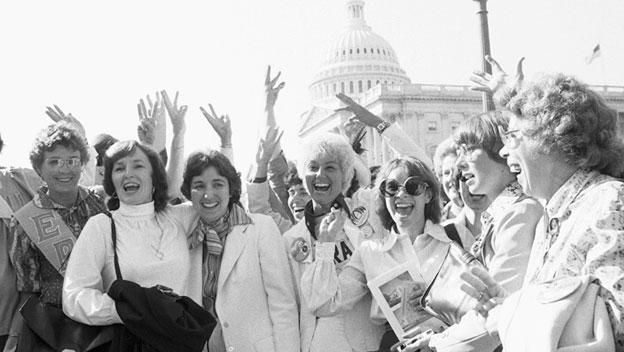

Adding an explicit guarantee of sex equality in the Constitution, which would provide the strongest legal protection against future legislative attempts to roll back gender equality rights.The Equality Act would codify the Supreme Court’s decision in Bostock and explicitly bring LGBTQ+ people under the protections of other sections of federal law, reaching beyond the workplace to public schools, housing, credit opportunities, juries, federally funded programs, and public accommodations (defined generally as public and privately-owned facilities that are open to the public).Īs a starting point, the ERA would usher in changes in sex equality protections by: Clayton County, the Supreme Court held that Title VII of the1964 Civil Rights Act, which (among other things) prohibits employment discrimination based on “sex,” extends to discrimination against employees based on their sexual orientation and gender identity and expression.
#EQUAL RIGHTS AMENDMENT UPDATE#
The Equality Act would update existing federal civil rights laws by applying an inclusive definition of sex that encompasses sexual orientation as well as gender identity and expression. LGBTQ+ people face pervasive discrimination and lack basic equality protections under federal 12 laws and the laws of 29 states. This policy brief explains what the Equality Act and the ERA would do, how they can work together, and why we need both. As the ERA gains renewed momentum and as sexual minority groups gain recognition and visibility in the sex equality movement, the same fear tactics that were used to stall the ERA in the 1970s and 1980s are being repurposed to once again pit women against each other, particularly when it comes to the Equality Act. Nevertheless, the Equal Rights Amendment and the Equality Act remain controversial. The United States is an outlier among modern democratic countries in not including these protections in our constitution and laws. Two pieces of legislation are pending in Congress that would strengthen legal protections against sex, sexual orientation, and gender identity- based discrimination: the Equal Rights Amendment (ERA) and the Equality Act. In 2021, these groups, among others, still lack fundamental equality under the law. When the United States Constitution was written in 1789, its defining phrase “We the people” did not include women, LGBTQ+ people, people of color, or immigrants. Policy Brief conducted by The ERA Project at Columbia Law School


 0 kommentar(er)
0 kommentar(er)
